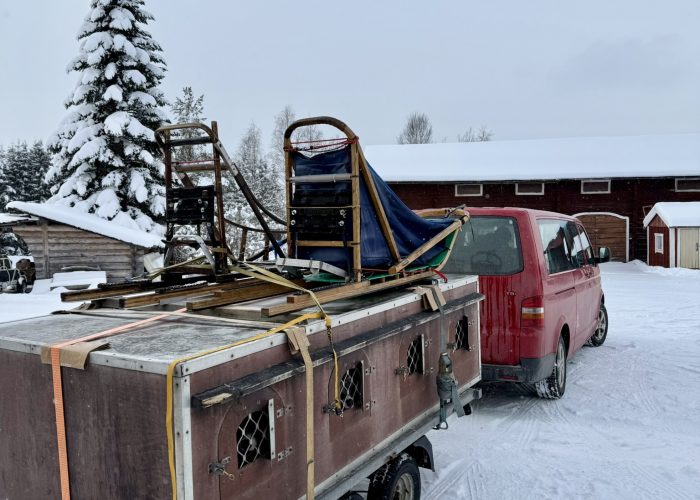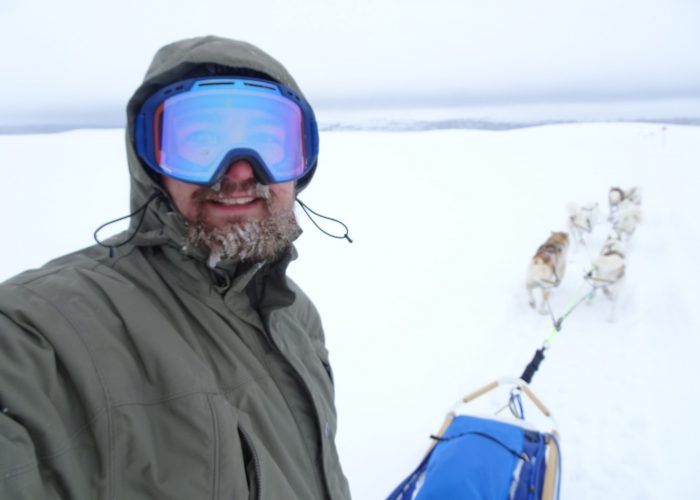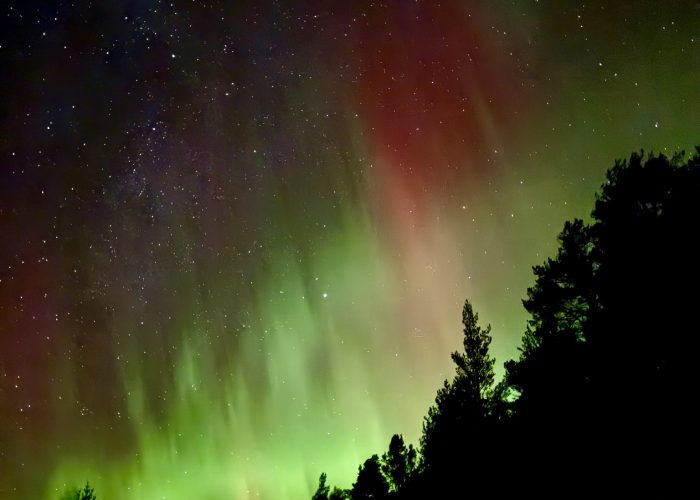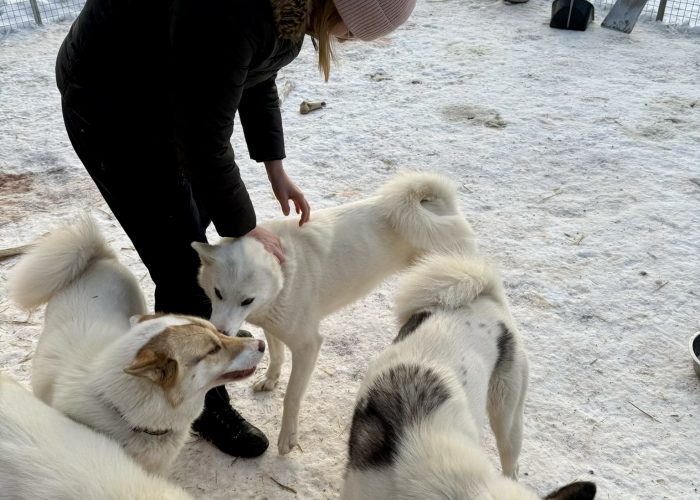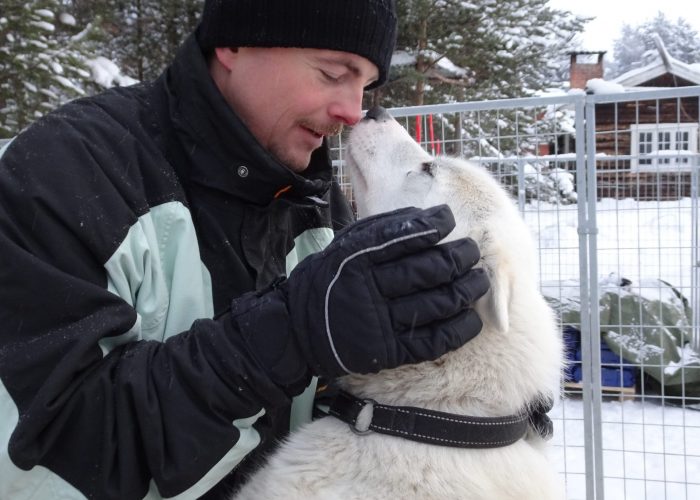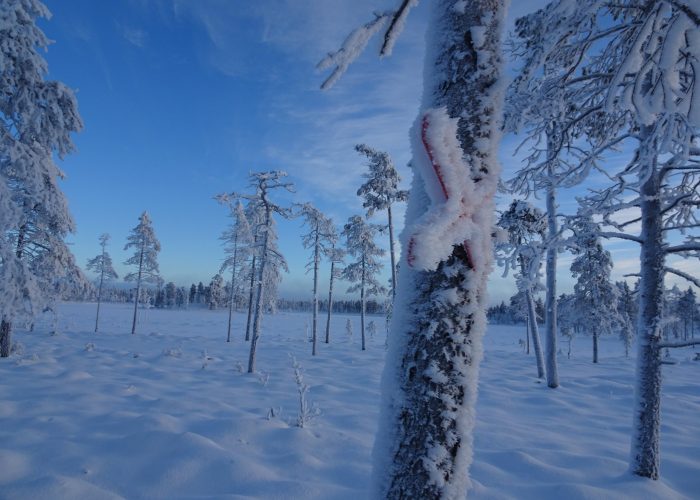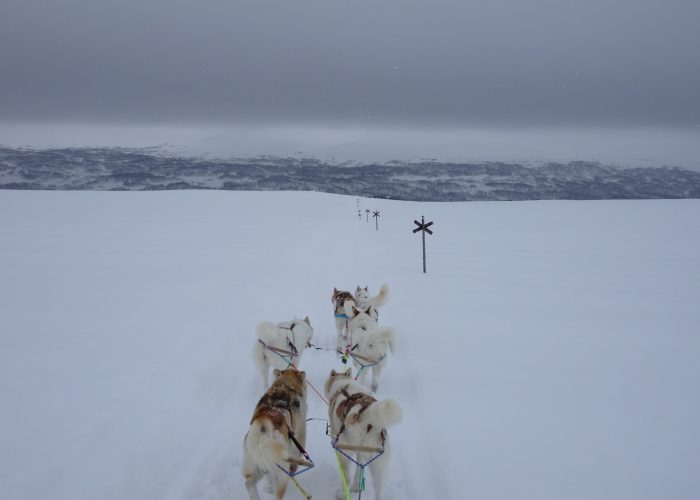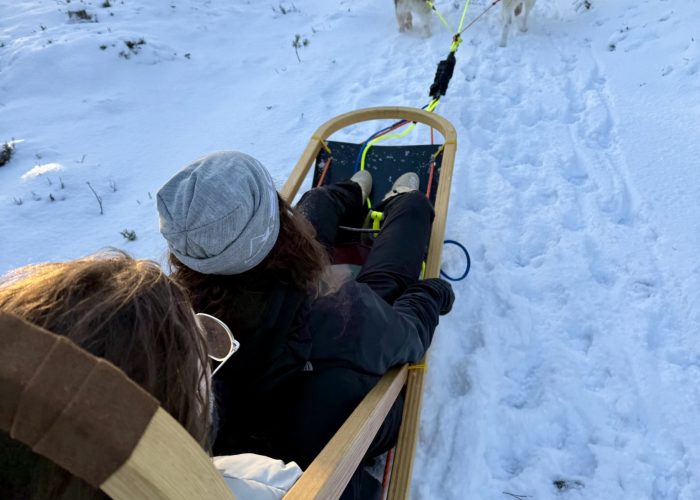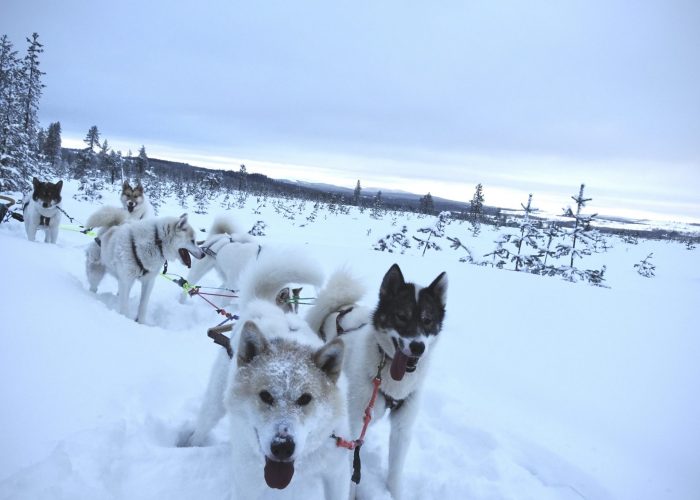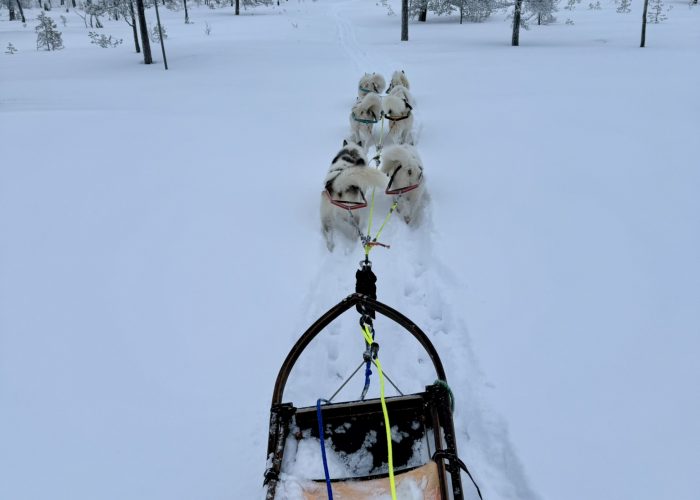How to plan a sled dog tour
We are going on a sled dog tour
In this article, you will find interesting information about dog sledding tours. You will learn how to properly prepare for a tour and what to expect on-site.
General
Since the connection between humans and dogs exists, especially in the snowier regions of the world, dogs have been moving sleds together with humans. With their teams, sled drivers (mushers) could shoulder many kilometers and heavy loads daily.
The dogs were used for hunting and traveling, and in bad times, they were also considered an emergency ration for humans. Later, sled dogs were used for numerous expeditions. Both the South and North Poles were first reached by dog sled.
This tradition gave rise to dog sledding as a hobby at the end of the 19th century, and the first races were held. For example, the Iditarod race is modeled after a historic dog team due to the diphtheria epidemic in Nome, Alaska.
Even today, dog sledding is still popular in Scandinavia, Alaska, Canada, and parts of Switzerland/France. While the sleds were originally pulled by Alaskan Malamutes, Greenland dogs, Samoyeds, Siberian Huskies, and Canadian Eskimo dogs, many mushers nowadays choose the specially bred Alaskan Huskies for sled dog racing.
What unites all mushers in general: The joy of an excursion with their own sled dog team through the pristine winter landscape. Being completely with oneself and one’s 4-legged team, experiencing sunrises and sunsets over the treeless peaks of the fjell, and exploring the seemingly endless forests.
And this is something you can also experience. Through a variety of different providers of sled dog tours, you too can fulfill your dream of a ride with sled dogs.
Your adventure with sled dogs
Most providers of sled dog tours are based in northern Scandinavia. Here you can still find the snowiest regions in Europe. Snow paired with unique mountain landscapes attract many tourists to the region every year. The highest snow reliability can be found here from January to the end of March. Often the snow is already there in December and doesn’t disappear until April. The period from early January to mid-February is considered the coldest. However, depending on the region, temperatures below -30 degrees can also occur from mid-November onwards. The further north you go, the darker it gets at this time of year. If you are looking for a deep winter experience, January and February are the best months. Even in March/April, it can occasionally still be very cold at night, but it is usually much warmer during the day. However, the actual weather on-site cannot be predicted for a longer period.
Adapted to, among other things, the different expectations and fitness profiles of the guests, the providers offer various tour models. First, the question arises whether guests want to drive their own sled or prefer to ride in the sled of a guide. The latter is primarily aimed at people who, for example, do not feel confident or comfortable with their own team of dogs due to their fitness or age. However, most people, as we have experienced, prefer to be out with their own sled. Depending on the provider, there are hour/day tours or multi-day tours. In addition, the providers differ in the overall experience. While especially large providers often work with large, comfortable hotels and accommodations, smaller providers offer the full range of accommodations. From cozy, fully equipped accommodations to traditional Scandinavian accommodations that you heat yourself with a wood stove, you will find everything here. If your dog adventure is part of a ski vacation, hour/day tours are recommended. Guests then either ride in the guide’s sled or drive their own. Typically, participants spend between 1 and 5 hours with the dogs in nature. Participants usually cover 10-50 km. Many providers also offer a small coffee break (called “fika” in Sweden).
If you opt for a multi-day tour, this can either be several day trips with the aim of relaxing in the main camp in a sauna or heated water barrel in the evening or several consecutive days, during which you stay overnight in mountain cabins, tents, or under the open sky.
How do I plan my sled dog tour?
First, you should consider what kind of adventure suits you. Is it an initial introduction or do you want to be on the go for a whole week? Inform yourself about the different providers and choose an appealing tour model.
Our tips on what to look out for:
- What is offered to me?
- How am I accommodated?
- How large is the total group I am traveling with?
- How do I get there?
- In which language are the tours offered?
- Is the trip well described?
- Do I meet the fitness profile of the trip?
Find out about this on the websites and social media appearances of the companies.
Then you should consider in which period you want to travel and how intensively you want to experience the Scandinavian winter. If you would like to experience temperatures below -20, you should book at the beginning of the winter season. If you prefer a more relaxed trip on already well-prepared dog trails, March is preferable.
Before contacting the sled dog tour provider, you should also gather information about the travel options. Most tours take place away from major cities and airports, and accordingly, the journey can be complicated. In principle, you can travel by car or take a flight and come to the dog camp by public transport or airport transfer.
Then you should think about a packing list. In addition to warm, long underwear and ski clothing, utensils such as a thermos flask, daypack, headlamp, ski, and sunglasses are often advisable. Many providers also provide you with a detailed packing list and rental equipment. If you book a tour with overnight stays in the wilderness, inquire about the availability of special expedition sleeping bags. These work up to -30 or -40 degrees. Most self-brought sleeping bags that we see from guests are useless under the conditions on-site.
Frequently Asked Questions
How do I stay warm at -30 degrees?
In addition to appropriate clothing (see above), your own movement is also essential. It’s best not to let it get to the point where you’re freezing by continuously moving your limbs. For example, we continuously move our toes in our shoes, even when sitting or standing for a long time. It’s the same with our hands. The more we keep them actively moving, the warmer they are. If you feel cold all over your body, a short sprint through the deep snow can help. This is very strenuous and greatly stimulates your own heat production. There are also exercises at the sled that can prevent extreme cold. It’s best to ask your guide how you can move best at the sled.
How do I get there?
Most guests travel to Scandinavia by car or fly via the major airports in Stockholm and Oslo. From there, there are often coaches to the snow areas.
What sleds are used on tours?
While sleds in Greenland are often very wide and heavy (up to 5 people can sit on them), so-called “Nordic sleds” are used in North America and Northern Europe. They are mostly made of wood or aluminum. The sled driver stands at the back of the sled and has a cargo space for luggage or possibly one person at the front.
How fit should I be?
This depends on the extent of the tour you are interested in. If you want to be driven in a sled by a guide, you don’t need to focus on fitness. However, you should be flexible enough to be able to lean into curves and quickly get back on your feet in the event of a fall with the sled. Especially on multi-day tours, participants should be reasonably fit. Inquire in advance with the tour providers about the level of fitness they recommend. Sometimes it’s better to start a little more cautiously and book longer/more intensive vacations next time after you’ve gained some experience.
How are the animals doing? / Animal welfare
The animals are either bred for this purpose or, as with our Greenland dogs, have been living with draft work for thousands of years. Pulling sleds is the only way to meet the high exercise needs of the animals. However, dogs also have other needs. They like to explore new things and often have a pronounced social life that they want to live out. Of course, more attention can be paid to the individual dog, the smaller the dog kennel is. Most sled dogs are also very well adapted to the cold and snowy areas where they live. However, while, for example, Greenland dogs or Alaskan Malamutes feel really comfortable at temperatures below -25 degrees, the modern bred Alaskan Huskies need aids such as jackets, fully insulated kennels, and jackets at these temperatures.
What do the dogs do in the summer?
While some mushers leave their dogs in enclosures for a few months in the summer, others train their dogs all year round. Teams of 10-20 dogs are harnessed to quads or beach buggies and trained. Since the dogs quickly overheat at high temperatures, such training usually takes place in the summer at night, after the midnight sun has set. We do train our dogs all year around. That way we do not only preserve their muscles for the next season, it also gives them the physical and mental utilization they demand.
Can I work with sled dogs?
The work is strongly seasonal. While most workers are needed and sought after in winter, the dogs also need to be cared for in summer. If this is something for you, just write to a few tour providers from May onwards and ask if you can work there towards winter. At first, you start as a kennel assistant (often against food and lodging). You feed the dogs and take care of the tour guests and help out in the main camp. The longer you do the job, the more responsibility you can take on, and you also have prospects for a salary. Make sure you are officially registered by the employer and inquire in advance about the living situation. Tip: Many job offers are advertised in corresponding Facebook groups.
Do you have questions? Ask us!

